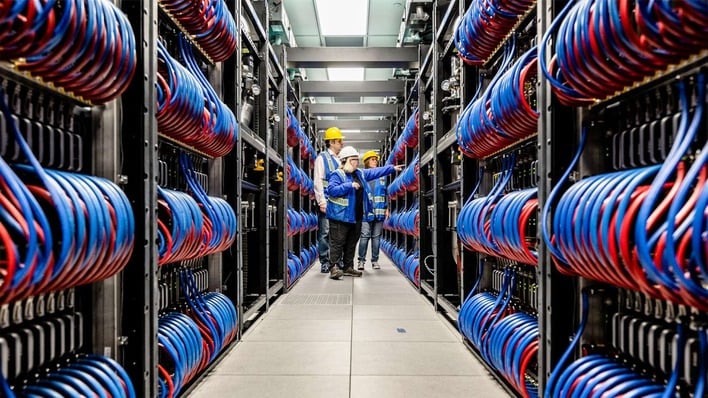
The Aurora supercomputer at the Argonne National Laboratory, powered by Intel’s Xeon Max series of processors, is the new AI king with the ability to reach 10.6 AI exaflops of compute. On top of taking the AI crown, it also managed to break the exascale barrier, hitting 1.012 exaflops for scientific applications. The Aurora Supercomputer helps with researcher in using AI, many life sciences initiatives, including mapping the human brain, particle physics, and novel drug design.
There’s some serious hardware powering Aurora. The machine is comprised of 10,624 compute blades housing 63.744 Intel Data Center GPU Max Series chips spread across 166 racks. According to Intel this makes Aurora one of the biggest GPU clusters anywhere in the world. Moreover, the platform is also built on “the largest open, Ethernet-based supercomputing interconnect on a single system of 84,992 HPE slingshot fabric endpoints.”

All this hardware helps Aurora chart on several other leaderboards. Unfortunately, it still only manages to come in second place in the high-performance LINPACK benchmark. This is where AMD still holds the top spot. However, Intel claims that Aurora is only using 87% of the system at the time of submission, so it appears as if there’s room to improve its standing if Intel can unlock more of the available performance.
What might be of concern for Intel is the amount of power required to run Aurora, with the system consuming some 38,698 kW. Meanwhile, the Frontier supercomputer that runs on AMD is only hitting 22,786 kW and still outperforming Aurora. For a system to be using that much more power than a competitor and still coming up short is less than ideal.
Intel is right to be proud of the company’s AI performance but, the system has room for refinement when it comes to efficiency. Hopefully Intel can get a handle on this side of things with its next generation of CPU and GPU products for HPC.